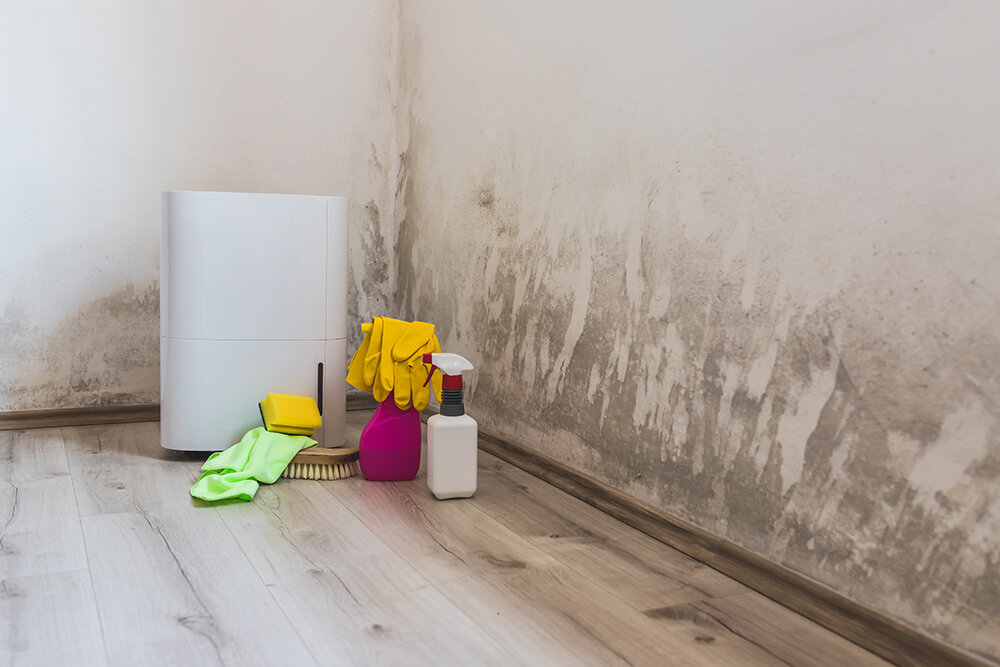
Smartline Research
Understanding the relationship between humidity and mould
Nobody wants to live in a mouldy home. Its smell is all-pervading and unpleasant; however, it can have more serious effects on people’s health. Mould is especially serious if someone suffers from a respiratory disease like asthma.
Mould also affects the fabric of the building. Predicting its growth would help with maintenance and reduce the costs of remedial work, as well as creating a far healthier and more pleasant home environment. If we can predict and monitor mould growth in people’s homes, we can hopefully control it.
Why is it important to understand the link between humidity and mould?
Our objective is to predict mould growth in people’s homes with humidity and temperature sensor data using a mould-growth model. This research will contribute to understanding how to reduce or even eliminate mould growth.
What is the significance of humidity in our research? Mould needs a damp environment in order to grow, and a poorly ventilated property creates the perfect humid environment in which mould thrives. Unfortunately (but naturally), many people avoid ventilating their homes by opening windows or vents because of the resulting heat and energy loss.
If we can model mould growth from data collected from actual homes, this research should be able to identify how much the humidity needs to change in order to stop mould growth appearing. For example, a home may only need a small change rather than a lot of ventilation, which would prevent cold temperatures and save costs.
This could be useful for manufacturers of smart control systems. These systems regulate aspects like heating, air conditioning and ventilation by monitoring the air and making the changes required. They sometimes also take into account the human behaviour in the house, all without the occupant needing to touch the controls.
“Smart relative humidity and temperature monitoring could reduce mould growth, resulting in healthier people in healthier buildings. Future smart control over humidity should also maintain comfort levels by ventilating only to the extent that is needed, rather than over-ventilating and making the home colder.”
What research has been carried out?
Our researchers worked with 227 households from across Cornwall. Time-series air readings of the relative humidity and temperature were taken in both the bedroom and living room every three to five minutes.
The study took place from November 2018 to October 2019, to ensure that we captured data across all seasons. We also recorded the householders’ self-reported responses: what mould could they see or smell in their homes?
This approach expands on the classic way of modelling mould growth. The VTT model is often used for predicting mould, and was developed using laboratory readings of relative humidity, temperature and mould.
Of course, this model was developed in a highly controlled lab environment – our researchers have recorded data from far less controlled readings. The research team adapted the VTT model to work for the home environment.
By comparing the results from the adapted VTT model with the actual presence of mould or a mouldy smell, the team could test how effective the existing model is in a less-controlled domestic setting.
What has the research shown us?
The team found that if the model’s level of sensitivity to relative humidity is adjusted, it can be used to predict mould growth in the home from the humidity and temperature air readings from sensors.
What could be the impacts?
There are two main impacts. The first is being able to predict, and therefore prevent, mould growth in homes. Being able to identify levels of relative humidity that minimise mould growth, perhaps even specific to certain types of building or households, would reduce risks of respiratory diseases.
The second is how results from this model could be used to inform future smart control of the home environment. With sensor monitoring of the humidity levels, a smart control system could react as needed to avoid mould-favourable conditions.
What happens next?
Ongoing research is looking into the differences across different types of homes, and to identify homes at risk - including possible solutions such as fans or positive pressure units to reduce humidity.
Who was involved?
This Smartline research was led by Dr Tamaryn Menneer, with , Dr Markus Mueller and Profr Stuart Townley of the University of Exeter and Dr Richard A. Sharpe from Cornwall Council
Additional Research
Modelling mould growth using relative humidity and temperature time-series data
Mould has an adverse affect on health, e.g., asthma and other respiratory diseases (Sharpe et al., 2015). The VTT model predicts mould growth from relative humidity (RH) and temperature (Hukka & Viitanen, 1999). It was developed using surface readings on wood in a controlled laboratory setting.
Exposure to Indoor Mouldy Odour Increases the Risk of Asthma in Older Adults Living in Social Housing
Indoor dampness is thought to affect around 16% of European homes. It is generally accepted that increased exposure to indoor dampness and mould contamination (e.g., spores and hyphae) increases the risk of developing and/or exacerbating asthma. Around 30% of people in the Western world have an allergic disease (e.g., allergy, wheeze and asthma).
Fuel poverty can increase mental health risks for social housing tenants
New research published in Wellbeing, Space and Society, highlights the increased mental health risks of fuel poverty, for people living in social housing. Working in partnership with Coastline Housing, our research team surveyed 329 social housing tenants to collect self-reported measures of fuel poverty and information about their health and wellbeing.







